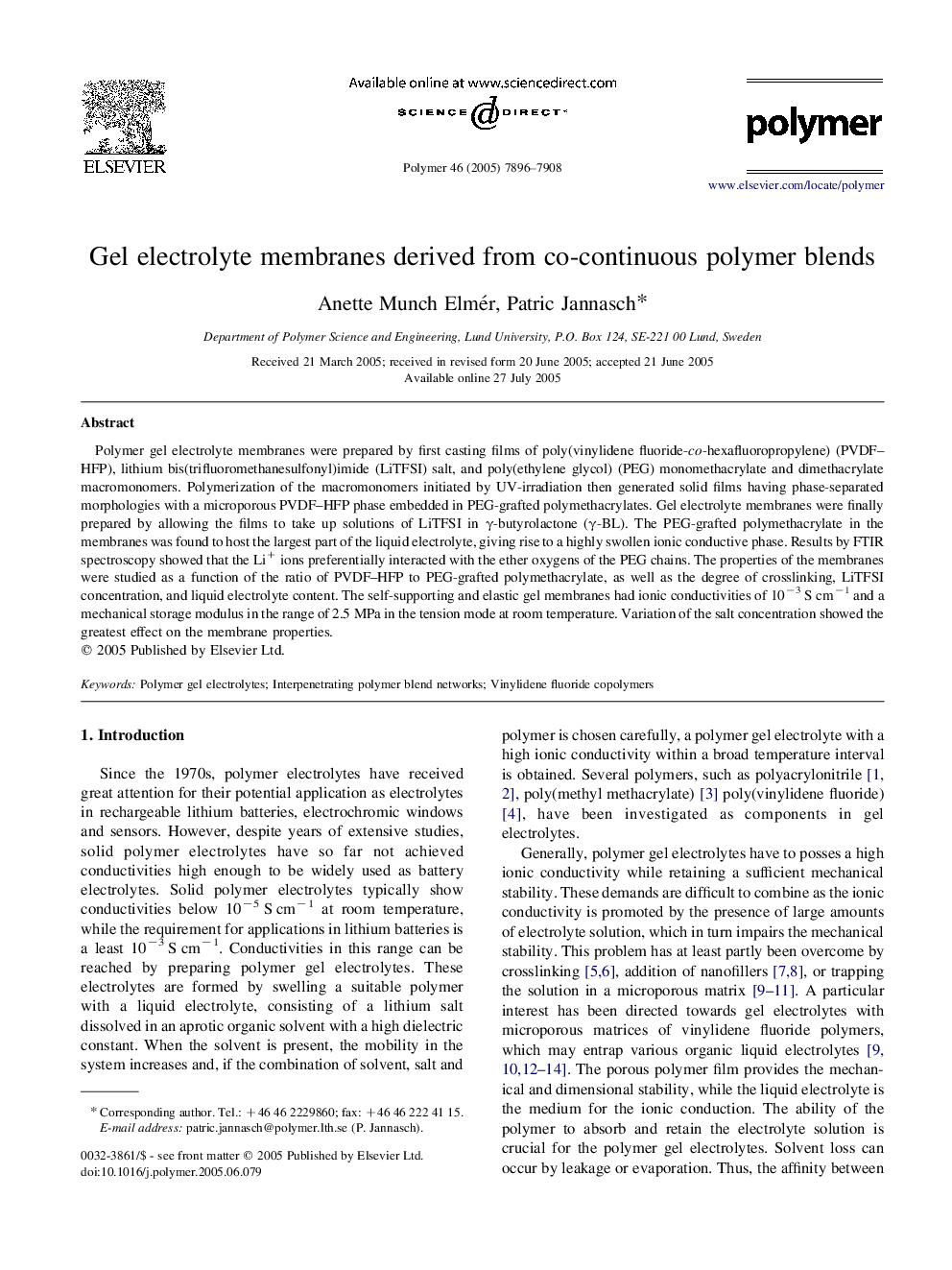| Article ID | Journal | Published Year | Pages | File Type |
|---|---|---|---|---|
| 5190711 | Polymer | 2005 | 13 Pages |
Abstract
Polymer gel electrolyte membranes were prepared by first casting films of poly(vinylidene fluoride-co-hexafluoropropylene) (PVDF-HFP), lithium bis(trifluoromethanesulfonyl)imide (LiTFSI) salt, and poly(ethylene glycol) (PEG) monomethacrylate and dimethacrylate macromonomers. Polymerization of the macromonomers initiated by UV-irradiation then generated solid films having phase-separated morphologies with a microporous PVDF-HFP phase embedded in PEG-grafted polymethacrylates. Gel electrolyte membranes were finally prepared by allowing the films to take up solutions of LiTFSI in γ-butyrolactone (γ-BL). The PEG-grafted polymethacrylate in the membranes was found to host the largest part of the liquid electrolyte, giving rise to a highly swollen ionic conductive phase. Results by FTIR spectroscopy showed that the Li+ ions preferentially interacted with the ether oxygens of the PEG chains. The properties of the membranes were studied as a function of the ratio of PVDF-HFP to PEG-grafted polymethacrylate, as well as the degree of crosslinking, LiTFSI concentration, and liquid electrolyte content. The self-supporting and elastic gel membranes had ionic conductivities of 10â3 S cmâ1 and a mechanical storage modulus in the range of 2.5 MPa in the tension mode at room temperature. Variation of the salt concentration showed the greatest effect on the membrane properties.
Keywords
Related Topics
Physical Sciences and Engineering
Chemistry
Organic Chemistry
Authors
Anette Munch Elmér, Patric Jannasch,
